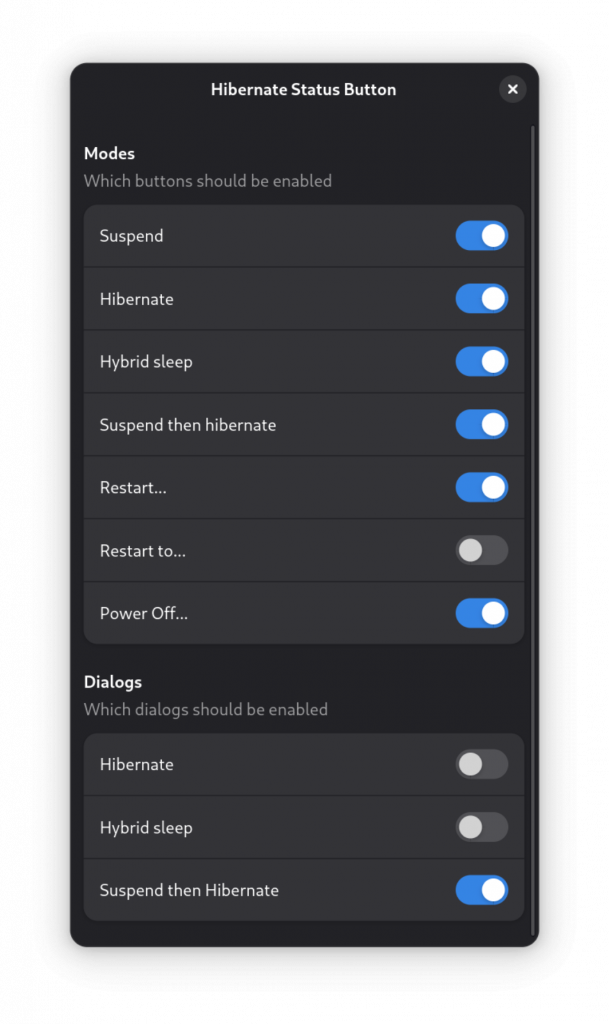Since more than a year I use the TUXEDO Stellaris 17 Intel Gen6 Notebook for daily development.
Ubuntu 24.04 is working there quite well. Thanks to TUXEDO, the hardware support if great but one thing what made me cringe was the lack of hibernation support and sporadic wake-ups can be frustrating and dangerous if the notebook should sleep in the bag when you are on the go.
The default Ubuntu 24.04 (and also TUXEDO’s adapted TUXEDO OS) does not setup a SWAP partition of the correct size which makes hibernation impossible. Even if you do this setup yourself you will find out that modes like SuspendThenHibernate will cause the system never to hibernate due to the unnecessary wake-up calls.
The frustration with hibernation was the main reason to give Debian 13 Trixie a try to find out if this distributions also has such issues.
Necessary Steps
I can already summarize that not only was the default installation a success, but hibernation also works perfectly. Minor configuration steps were necessary on Debian 13 Trixie.
- The default installation on NVMe was problem-free. Debian supports LUKS encryption of partitions, including the SWAP partition, which contains the complete extract of the working memory in hibernation mode.
- The SWAP partition automatically has the size of the RAM—more precisely, it is even slightly larger so that the contents of the RAM still fit in the partition despite the LUKS header. A manual hibernation test after installation confirmed that hibernation is working.
sudo systemctl hibernate- After restarting the notebook, the system wakes up again, asks for the encryption password, boots Linux, and continues where it left off.
- The file /etc/systemd/sleep.conf contains the default settings for systemd, which is responsible for suspend and hibernate. I have adjusted the settings slightly to suit my needs:
sudo vi /etc/systemd/sleep.conf
[Sleep]
AllowSuspend=yes
AllowHibernation=yes
AllowSuspendThenHibernate=yes
AllowHybridSleep=yes
#SuspendState=mem standby freeze
#HibernateMode=platform shutdown
#MemorySleepMode=
HibernateDelaySec=30m
HibernateOnACPower=yes
#SuspendEstimationSec=60min- In particular, the HibernateDelaySec is set to 30m. In combination with my Gnome settings, this means that Gnome dims the screen after 10 minutes. After 15 minutes, the notebook is suspended for 30 minutes. During this time, touching the touch pad or pressing a key is enough to wake it up, but if you don’t do this, the notebook wakes up on its own after the time has elapsed, only to hibernate.
- The Gnome shutdown menu does not yet include the option to trigger ‘hibernate’, ‘suspend then hibernate’, or ‘hybrid sleep’ from the graphical user interface. However, this can be quickly remedied with a Gnome shell extension called Hibernate Status Button.
- If you’re wondering what hybrid means: In this mode, the memory dump is written before the notebook is suspended and is available when a reboot is required, for example, if the battery runs out during sleep mode.
- When you close the lid of a laptop, Debian Trixie automatically puts the laptop into sleep mode. If you would prefer something else to be triggered instead, this can be changed in /etc/systemd/logind.conf.
sudo vi /etc/systemd/logind.conf
HandleLidSwitch=suspend-then-hibernate
HandleLidSwitchExternalPower=suspend-then-hibernate
...